Looking to elevate your everyday cooking? Learn how to make coriander powder (also known as ground coriander or dhaniya powder) right at home using whole coriander seeds. This essential Indian spice is a staple in vegan and vegetarian kitchens and adds a warm, citrusy flavor to curries, stir-fries, dals, and marinades. Homemade spice blends like this are fresher, more aromatic, and preservative-free—ready in just 15 minutes!
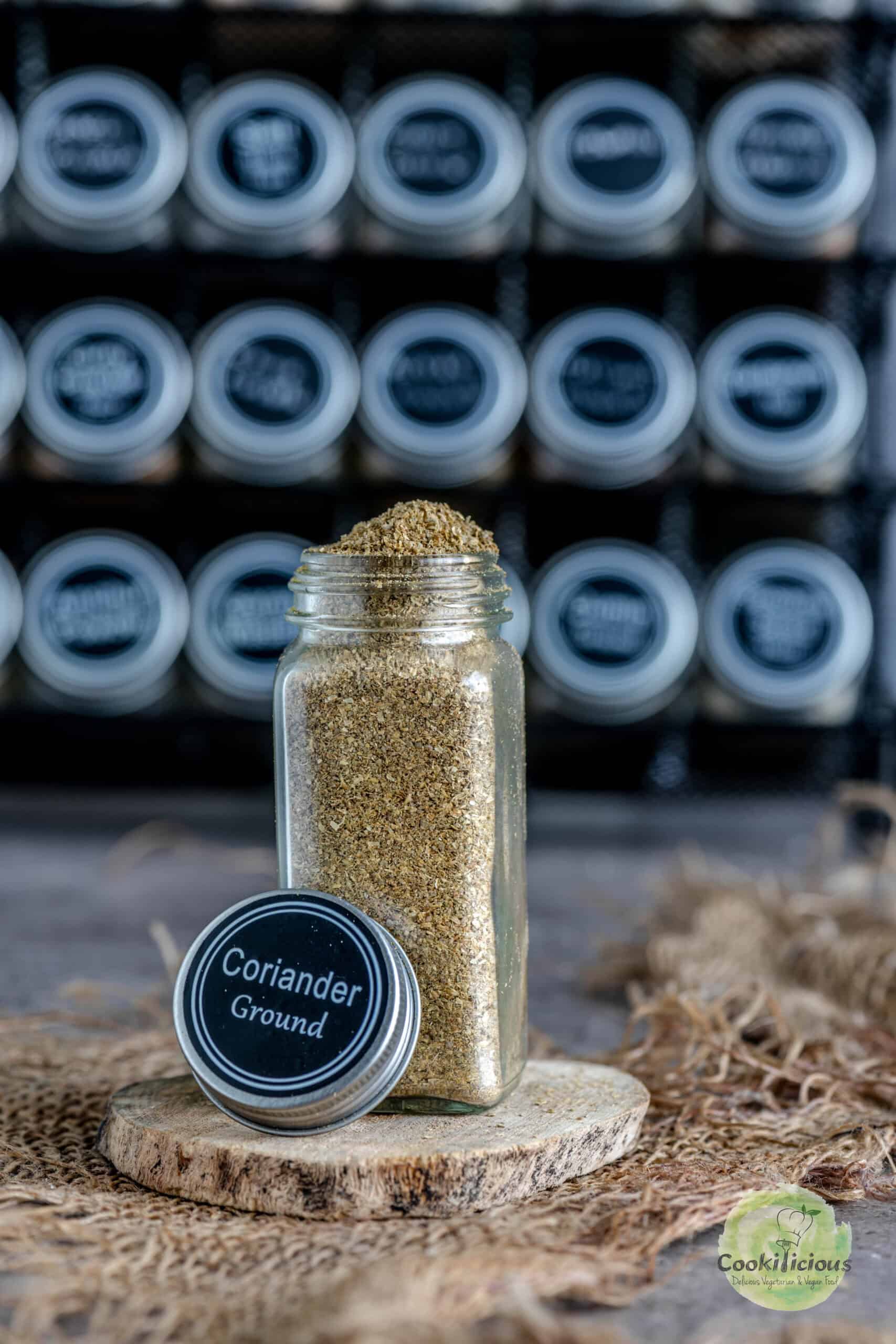
Jump to:
What is Coriander Powder
Coriander powder, or ground coriander, is made by dry roasting and grinding coriander seeds—the dried seeds of the cilantro plant. The Indian name for coriander powder is Dhaniya powder (dhaniya means coriander in Hindi). While cilantro refers to the fresh leaves and stems, coriander refers specifically to the seeds. Both come from the same plant, but their flavor profiles are quite different.
Coriander powder has a mild citrusy flavor with earthy-sweet notes and is an essential condiment in our Indian kitchens. If you cook a lot at home, you know that this is an essential spice mix and is commonly used in curries, chutneys, spice blends, and dry masalas to add depth and aroma. n Ayurveda, dhaniya powder is prized as a cooling spice that aids digestion.
Traditionally, coriander seeds were sun-dried and hand-pounded by our grandmothers. Today, we simply dry roast them on the stovetop or the oven to remove moisture and enhance flavor before grinding. This two-step process not only brings out their natural oils but also extends shelf life.
Store whole coriander seeds in airtight containers in a cool, dry place—they stay fresh for up to a year. Ground coriander, once made, is best used within 2–6 months for maximum flavor and aroma.
Trust me—once you make homemade Dhaniya powder, you won’t go back to store-bought. Coriander seasoning is vegan, preservative-free, pocket-friendly, and packed with unbeatable aroma and freshness!
Fresh seeds ensure a vibrant aroma and rich flavor in your spice mix. It’s best to buy coriander as whole seeds rather than pre-ground. Once ground, coriander quickly begins to lose its natural oils, aroma, and flavor. For the most vibrant taste and freshness, grind the seeds just before using them in your recipes.
Make Spice Mixes At Home
Whenever possible, I prefer making homemade Indian spice blends from scratch. The freshness, aroma, and flavor of DIY spice powders like Turmeric Powder, Garam Masala, Sambhar Powder, Idli Molagapudi, and Cumin Powder are simply unmatched. Plus, you know exactly what’s going into them—no preservatives or fillers.
One of my earliest food memories is watching my mom roast whole spices at home. The rich, toasty aroma would fill every corner of the house, and I’d stand by her side, soaking it all in with a smile. That joy of making your own spice mixes has stayed with me.
Making staples like coriander spice powder at home not only boosts the flavor of your dishes but also helps you maintain a clean, chemical-free pantry.
Almost every Indian kitchen features a Masala Dabba (spice box)—a round container with compartments for essential Indian spice blends. It keeps everything organized and within reach while cooking, and can be customized to suit your personal cooking style.
Why make it
- 💰 Cost-Effective – Buy coriander seeds in bulk and make a big batch for a fraction of the store price.
- 🌿 All-Natural – No preservatives, additives, or artificial colors—just pure, roasted coriander seeds. It's also, vegan, gluten-free, and nut-free
- 🌸 Fresh and Fragrant – Homemade spice mixes are always more aromatic and flavorful than store-bought ones.
- ⏱️ Quick and Easy – Ready in just 15 minutes with only two steps: roast and grind!
- 💚 Once you try homemade Dhaniya powder, you'll never go back to packaged versions.
Ingredients needed 🧾
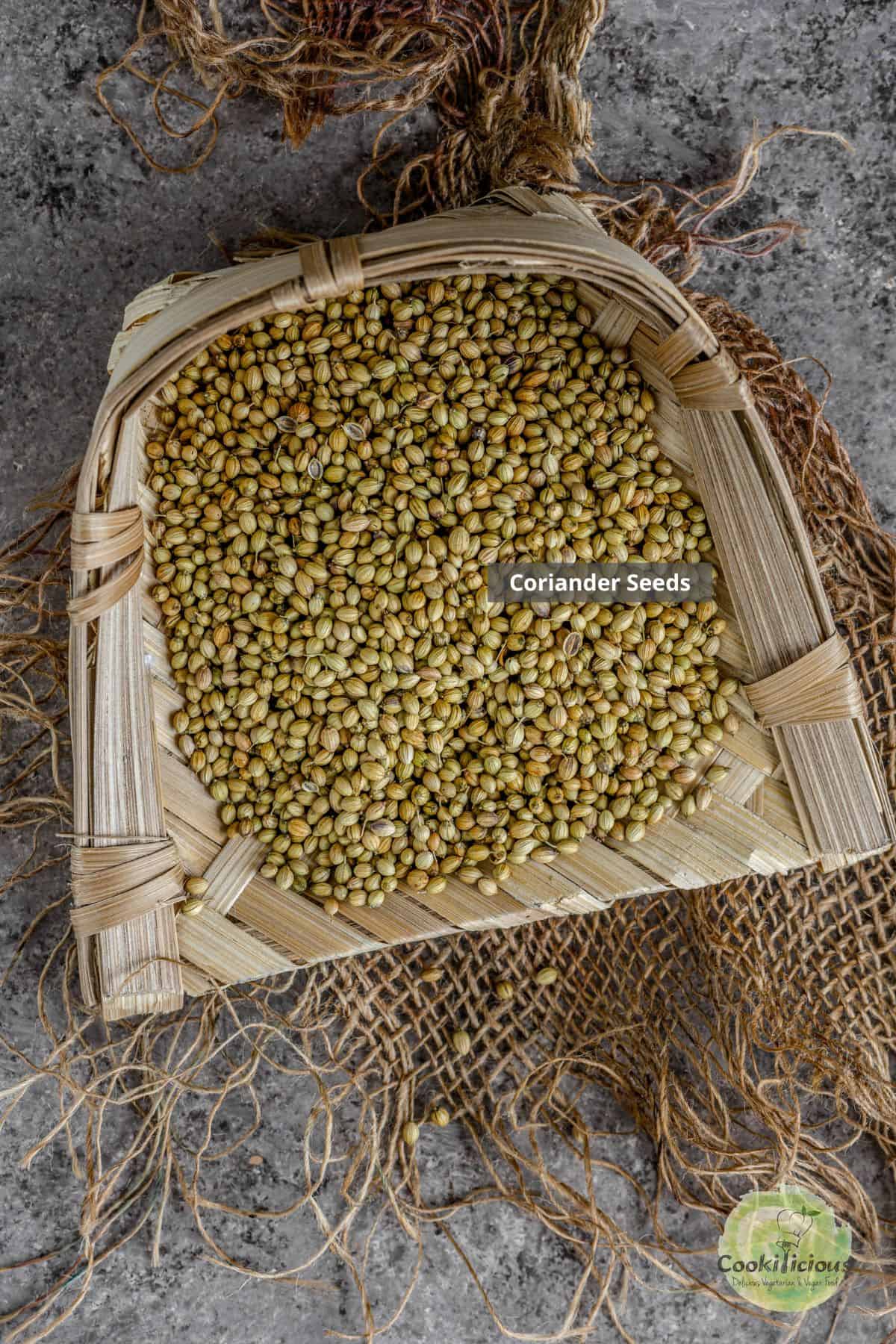
Use fresh, good-quality organic coriander seeds to make the best homemade coriander powder. You can find these seeds in bulk at most Indian grocery stores, making it more cost-effective than buying small packets.
To grind the seeds smoothly, a high-speed mixer grinder or spice grinder works best, giving you a fine, consistent spice blend every time.
How to make it 🔪
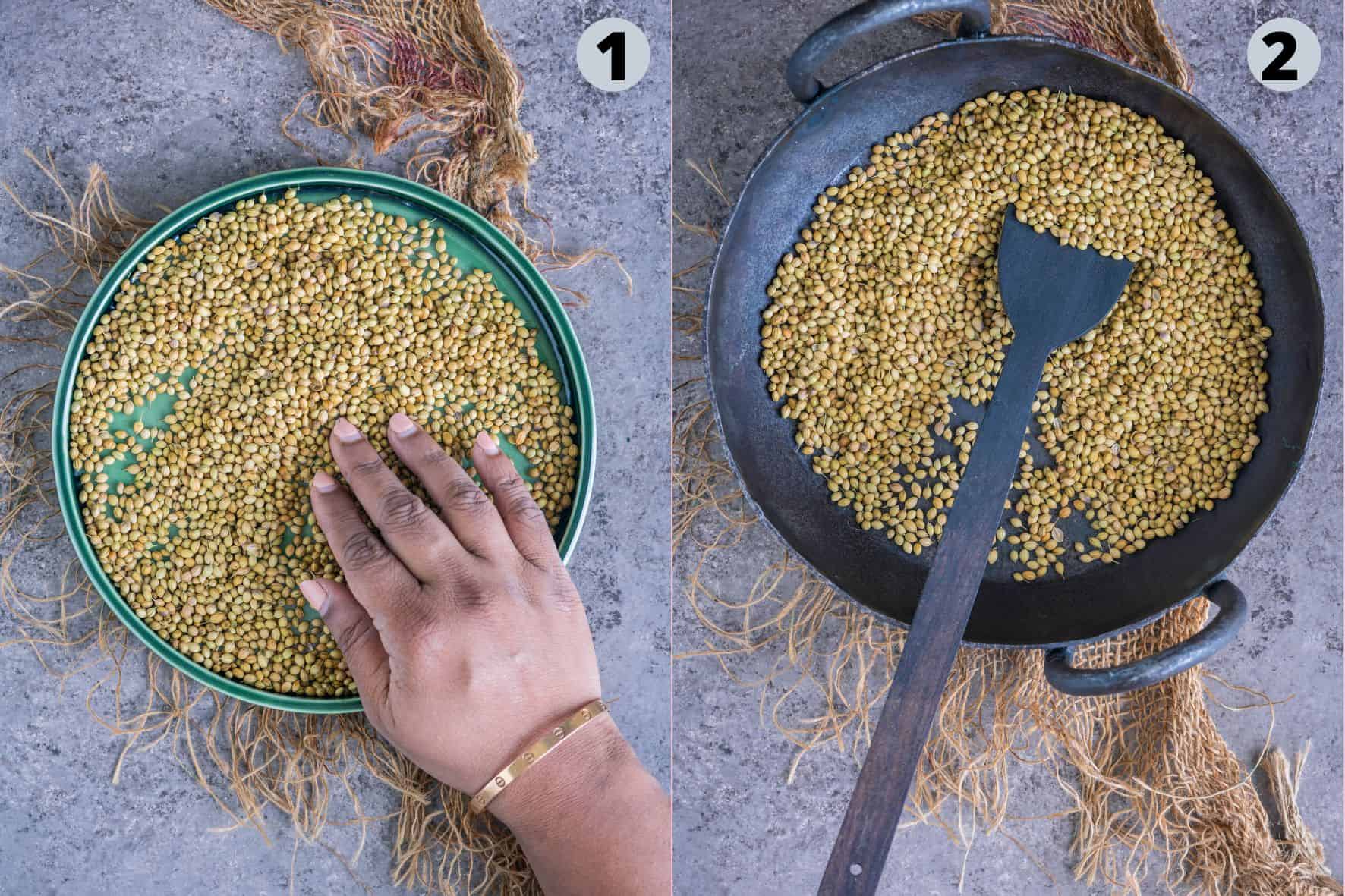
- Add the fresh and dry coriander seeds to a plate and carefully check for any tiny stones or impurities. Discard any unwanted particles to ensure a pure, clean spice mix.
- Transfer the cleaned coriander seeds to a dry pan over medium heat. Roast them for 2-3 minutes, stirring constantly to ensure even roasting.
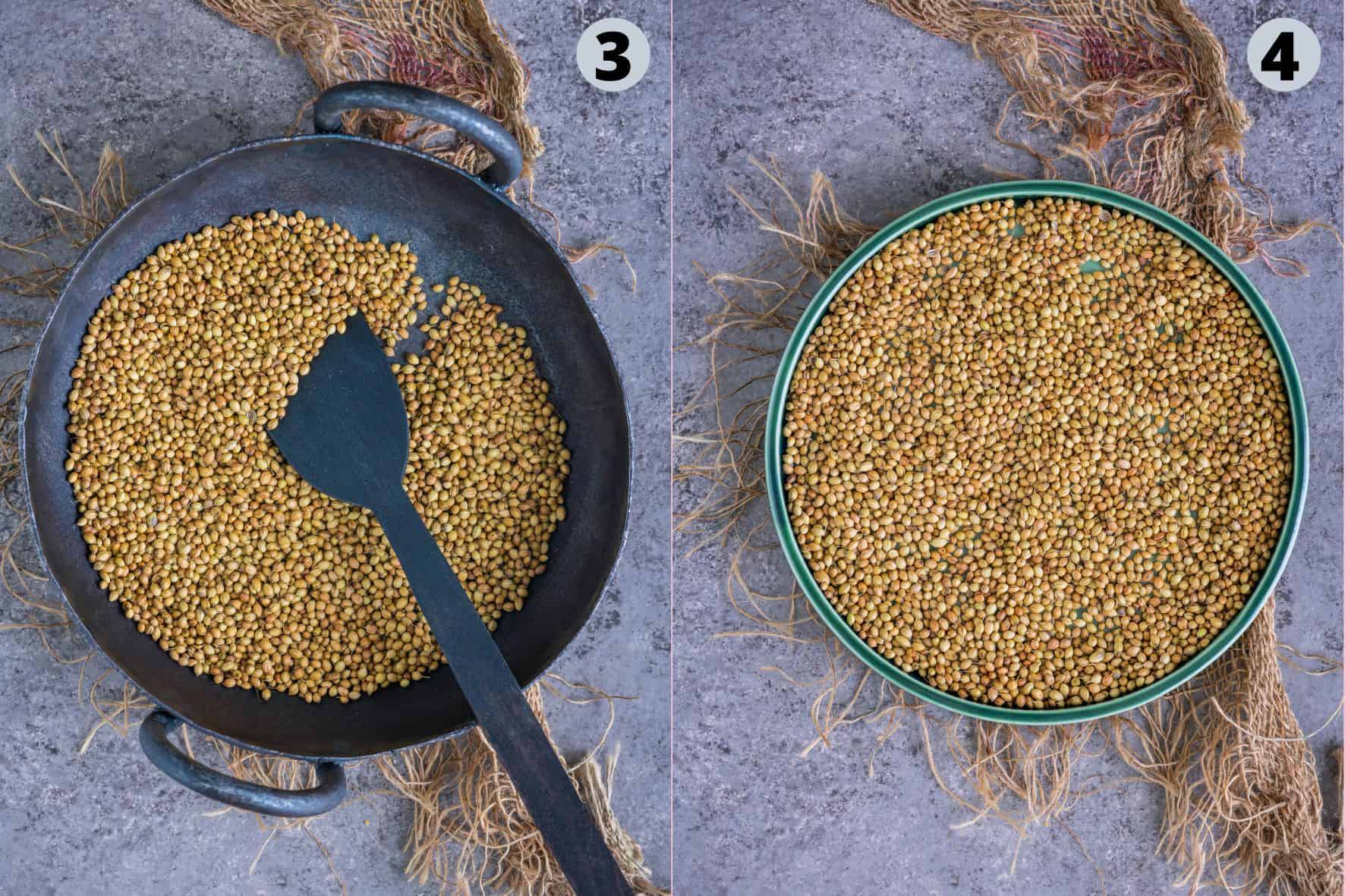
Want to save this recipe?
- Roast until they turn light brown and release a fragrant aroma—about 2–3 minutes. Avoid burning the seeds, as it can make the spice blend bitter. The flame should be low-medium.
- Once roasted, transfer the coriander seeds to a plate and let them cool completely before grinding.
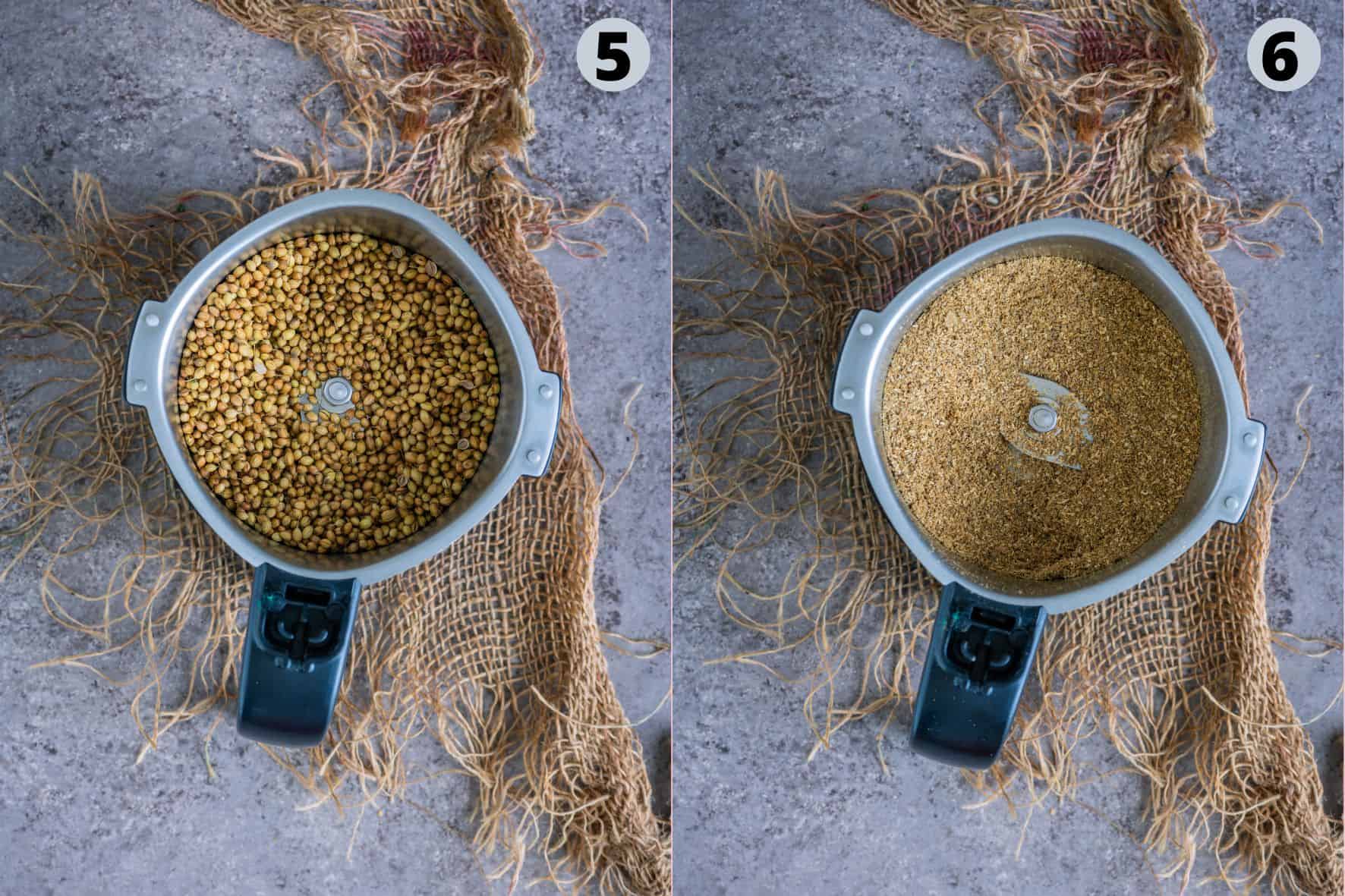
- Once the roasted seeds have cooled completely, transfer them to a dry, high-powered blender or spice grinder.
- Blitz until you get a fine or slightly coarse powder, depending on your preference. Sieving the spice blend is optional but helps achieve a smooth, uniform texture.
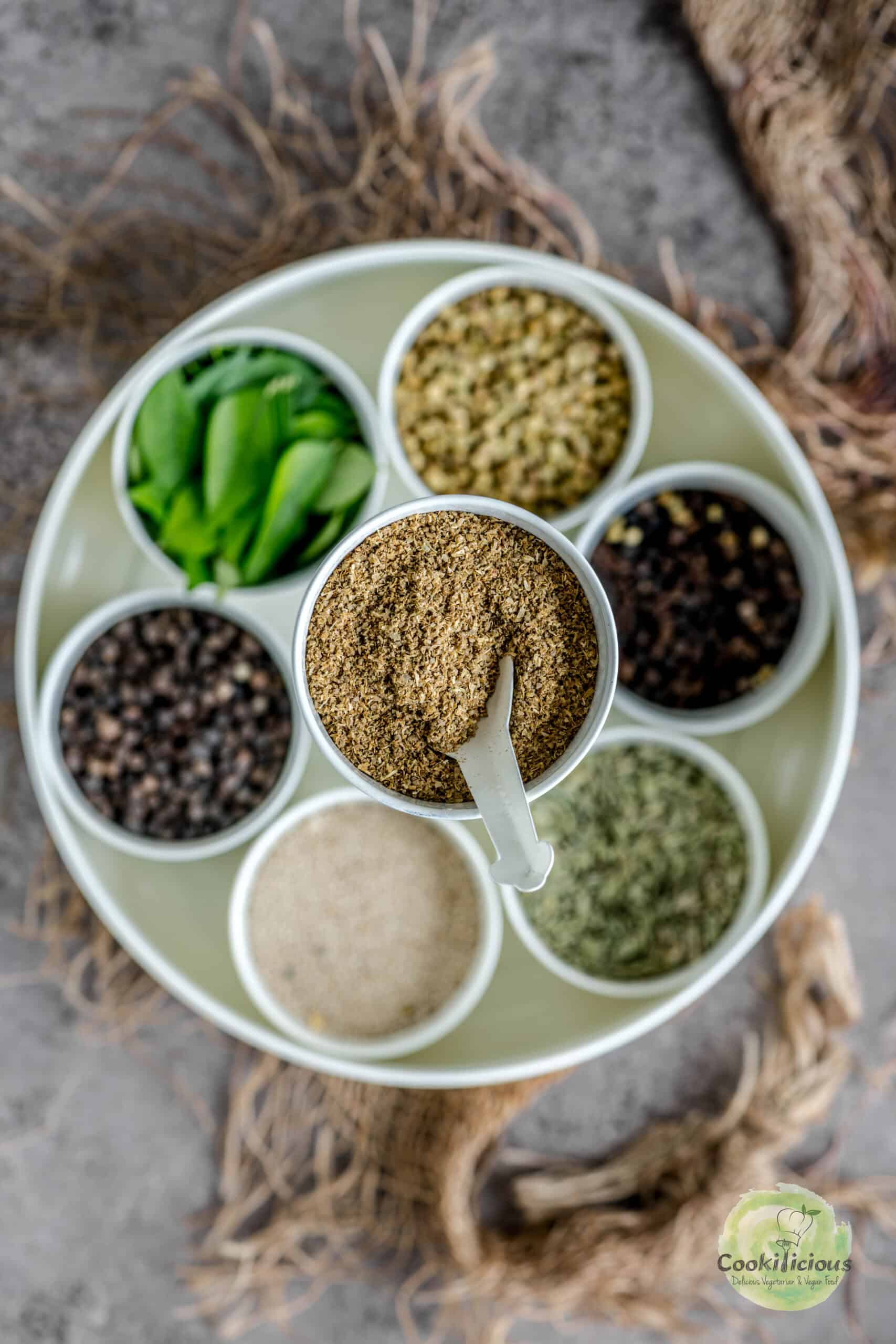
Serving suggestions 🍽
Half a cup of whole coriander seeds yields about half a cup of ground coriander powder, as the volume stays nearly the same. Since most recipes require only ½ to 1 teaspoon at a time, this batch can last you for weeks—even with regular use. Store your homemade powder in a clean, airtight glass jar to preserve its freshness and aroma. You can also keep it handy in your masala dabba (spice box) for easy access during cooking. You can also mix cumin and coriander powder and store. Use it in any recipe that calls for dhaniya-jeera powder.
How to use Coriander Powder
The flavor of dishes made with freshly ground dhaniya powder is truly unmatched! Use it generously in any recipe calling for coriander powder, roasted or raw, to enhance flavor. It enhances the taste of curries, gravies, salads, stir-fries, rice dishes like Tawa Pulao, and Potato Mint Rice, stews, soups, chaat, and even some drinks. Use it as spice rubs for marination.
Both coriander powder and cumin powder are essential staples in Indian cuisine, commonly used in recipes like Green Moong Dal Fry, Chana Palak, Mutter Paneer, Dahi Vada, and Mirchi Ka Salan.
Beyond Indian recipes, this spice mix also work beautifully in other cuisines—try adding coriander spice powder to Mexican favorites like Loaded Nachos, and Enchilada Casserole for authentic flavor.
Fun fact: I even add these spices when making Indian-inspired Indian curry pasta and refreshing Buttermilk Popsicles!
Top recipe tips 💭
Allow the roasted coriander seeds to cool down completely before grinding. Grinding warm spices can create unwanted moisture and affect the texture. Make sure your mixer or blender is completely clean and dry before use to avoid any contamination or clumping. Sieving the spice blend is optional but can help achieve a finer, more uniform consistency if desired. If you like a coarser texture, you can also use a mortar pestle to crush the roasted dhaniya seeds.
Recipe FAQs 📖
Dhaniya seeds are widely available at most leading grocery stores, both online and offline. However, for better freshness and value for money, I recommend visiting an Indian or Asian grocery store, where you can buy them in bulk at a more affordable price.
Look for crisp, aromatic, and good-quality organic whole coriander seeds—they should be golden-brown, not dull or shriveled. High-quality seeds will give you the best flavor and aroma when making homemade roasted coriander powder.
Yes, you can roast them in the microwave or oven if you prefer. For the microwave method, spread the seeds evenly on a microwave-safe plate and heat in 30-second intervals for about 3 minutes, stirring in between until they become aromatic.
To roast in the oven, preheat it to 325°F (160°C) and spread the seeds in a single layer on a dry baking tray. Roast for a few minutes until they turn slightly darker and release a strong aroma.
That said, the stovetop method remains the most efficient and traditional way to roast dhaniya seeds evenly. You can also sun-dry them for a few days, just like our grandmothers used to, especially in warmer climates.
Be careful not to burn the dhaniya seeds while roasting. If you overdo it, the dhania seeds will become dark brown and alter color of the spice blend and make it bitter. Always roast them on a low to medium flame and stir continuously to ensure even roasting. Once done, immediately transfer the seeds to a plate—do not leave them in the hot pan, even if the heat is turned off. The residual heat can continue cooking the seeds and may burn them.
To keep your homemade powdered dhaniya fresh and aromatic for as long as possible, store it in a clean, dry, airtight container. Using a small kitchen funnel makes transferring your ground coriander powder into storage jars easier and less messy. You can keep it on its own or mix it with cumin powder to make dhaniya-jeera powder, depending on your cooking preferences.
While whole dhaniya seeds can be stored in the freezer for up to 3 years, ground coriander has a shorter shelf life—typically 4 to 6 months. Avoid storing small quantities of ground spices in the refrigerator or freezer, as frequent opening may introduce moisture and humidity, which reduces freshness.
If you're storing dhaniya powder long-term, you can keep it double-bagged in the freezer to retain its flavor and prevent insects from getting in. However, the best method is to keep it in a cool, dark place, away from direct sunlight, humidity, or heat. Use glass jars or spice containers with tight-fitting lids to lock in the flavor and aroma.
Always use dry spoons when scooping dhaniya powder from the container. Moisture can cause the spice to clump, lose its aroma faster, and even lead to spoilage.
If you're out of dhaniya powder, you can use cumin powder as a substitute. While the flavor profiles are different—cumin is earthier and more pungent, whereas dhaniya is citrusy and mild—they often work well together in Indian cooking and can stand in for each other in a pinch.
Keep in mind, this won’t be an exact replacement, but it will still add depth to your dish. You can also experiment by adding other whole spices like caraway seeds, cloves, curry leaves, fennel seeds, poppy seeds, or bay leaves to your spice blends for a more complex flavor. These additions don't need to be roasted, especially if you're just looking to enhance the aroma subtly.
Since dhaniya seeds have a light citrus note, a pinch of lemon zest can aslo help replicate the flavor.
However, for the true aroma and flavor that coriander powder brings—especially in Indian curries and spice mixes—there’s really nothing quite like the real thing!
Fresh cilantro leaves, however, is not a suitable substitute for ground sookha dhaniya. Even though they come from the same plant, their flavor profiles are entirely different—cilantro is fresh, herbal, and slightly tangy, while powdered coriander is warm, nutty, and mellow.
It’s easy to know when dhaniya powder has lost its potency or gone bad. If the spice mix appears lumpy, overly powdery, or has tiny insects in it, it’s definitely time to discard it. Another clear sign is the lack of aroma—fresh dhania powder should have a distinct citrusy-earthy fragrance. If there's no scent at all, it's best to toss it and make a fresh batch for optimal flavor and safety.
More spice mixes
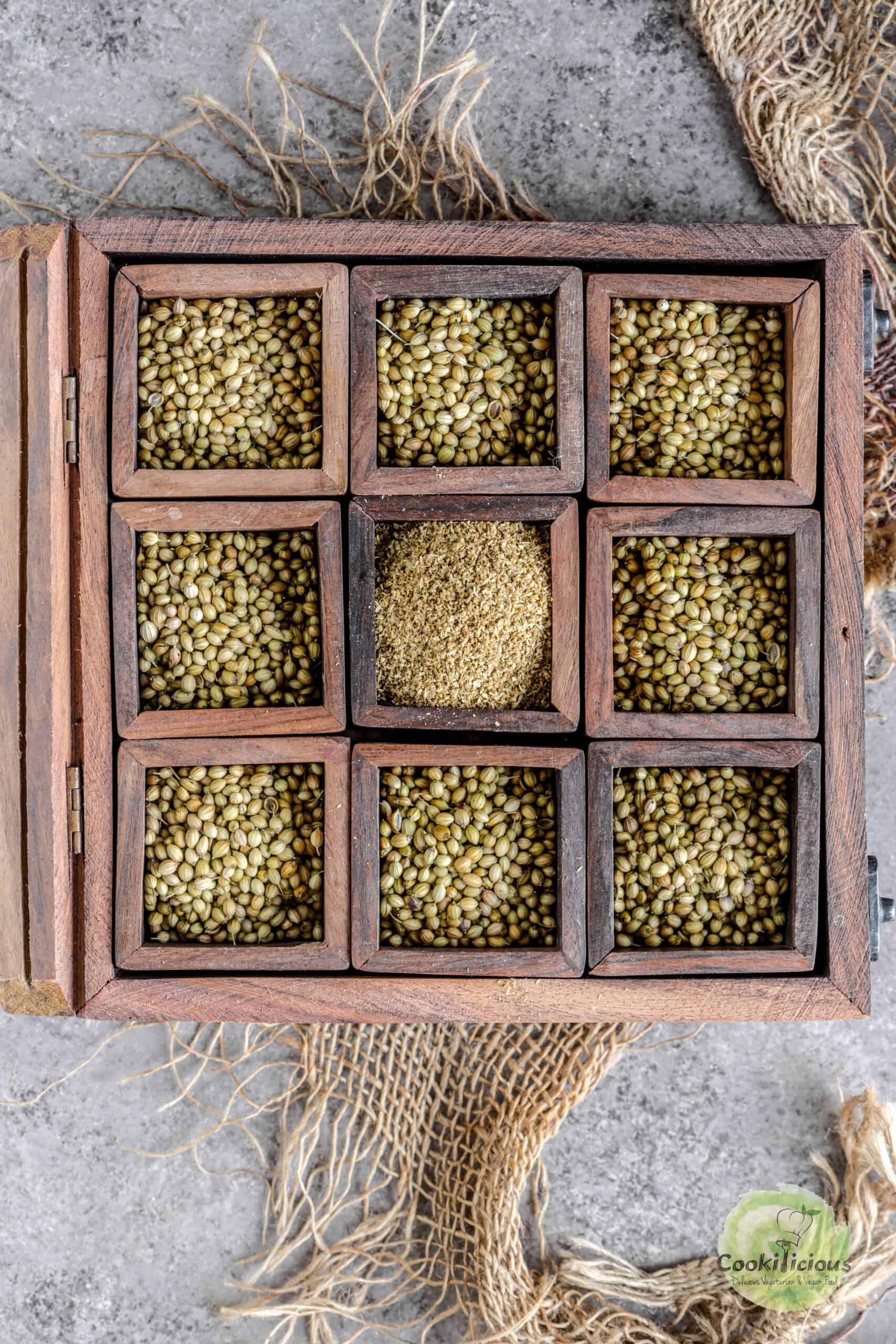
⭐️ Subscribe to the Cookilicious Newsletter and receive new recipes straight to your inbox! You'll receive my FREE Vegan Beginner's guide as a gift. Ready to elevate your cooking game? Purchase my Cookbook - The Essential Vegan Indian Cookbook today!
Recipe 📖

Homemade Coriander Powder (Dhaniya Powder Recipe)
Equipment
Ingredients
- ½ cup coriander seeds
Instructions
- Add dry coriander seeds to a plate and check for any tiny stones or particles. Discard if any.
- Then transfer the seeds to a pan and dry roast them. Roast for 1-2 minutes.
- Roast till they let out a fragrance and turn little brown. The flame should be low-medium. Keep tossing the seeds around to ensure even roasting.
- Take it out on a plate and let it cool.
- Once it's cooled down completely, transfer it to a dry high power blender.
- Blitz to make an almost fine powder.
- Half cup of coriander seeds will yield almost half a cup of ground coriander. Store in a clean and sterile glass Jar tightly sealed. You can also add it to your masala dabba. Use it in any recipe that calls for coriander powder.




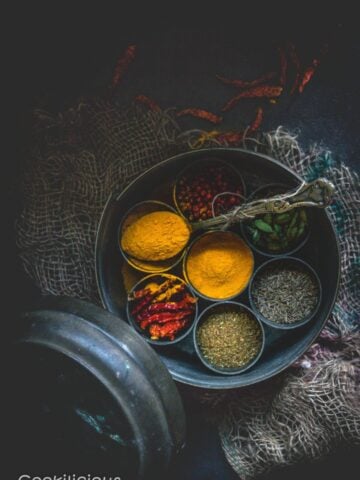
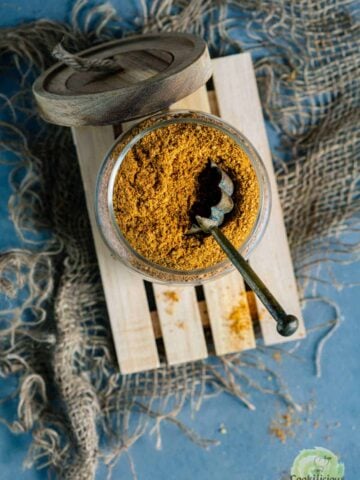
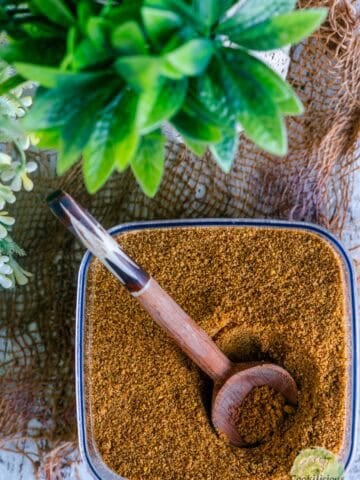
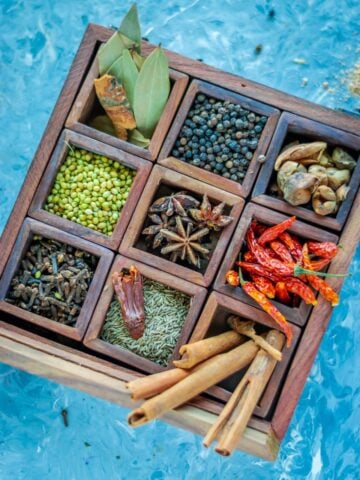
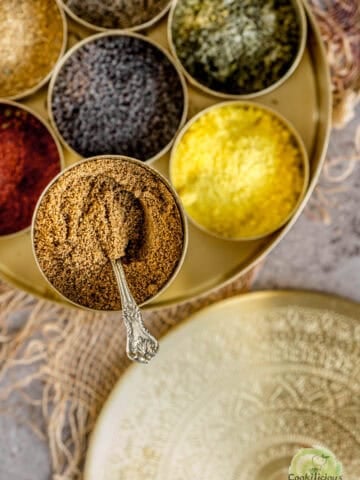
Pavani says
Nothing beats the flavor of freshly made dhania-jeera powder. Thanks for the detailed recipe - reminds me to make some soon.
Priya says
Thank you so much
Alison says
I use coriander and cumin all the time, but never thought of combining them into one spice mix. I'm going to give this a try!
Priya says
Thank you. Yes I do that sometimes.
Caroline says
I agree, freshly ground spices are definitely so much better!
Priya says
absolutely! Thank you.
Kushigalu says
Homemade spices are always the best. This is my favorite too.
Priya says
Absolutely! 🙂
Traci says
What an easy, classic combination! I always have these two spaces on hand and will be making this again and again. Thanks!
Priya says
Thank you
Irina says
OMG! I am looking at the box with spices, and I want to create such one! I love your recipe! You have inspired me 🙂
Jeannette says
I 100% agree that this is a pantry MUST HAVE! Love the roasted flavours and I know it'll pair perfectly with so many main dishes. Thanks for sharing!
Priya says
Thank you 🙂
Jacque Hastert says
I am going to have to blend this together soon! I love that it can be added to any dish and really enhances the flavor of traditional spices.
Priya says
Yes, do make it..it's totally worth it
Beth says
Yum! I can't wait to make this! It sounds so delicious!
Priya says
Thank you
Bintu | Recipes From A Pantry says
I love making new spice mixes up and this sounds like a powder I simply have to try!
Priya says
yes..its very easy and simple. Do try it. Thanks.